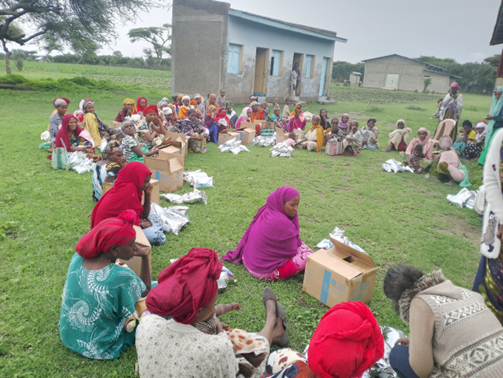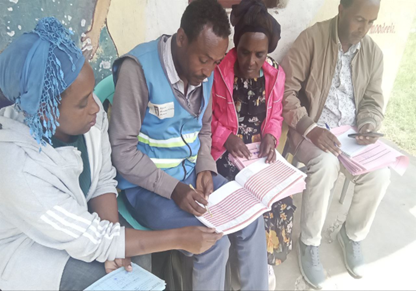In 2024, through its third-party monitoring partnership with the UN World Food Programme (WFP), AHA is working to improve data quality and program performance, specifically supporting Integrated Management of Acute Malnutrition (IMAM).
Program Update
In partnership with the Government of Ethiopia and the regional government of Oromia, WFP aids vulnerable communities, including malnourished pregnant and breastfeeding women, with food assistance, nutrition services, school meals, and vouchers for nutrient-dense foods to prevent stunting. WFP uses internal monitors and contracts local organizations for Third-Party Monitoring (TPM) in Oromia.
Since 2022, WFP works with AHA through a Field Level Agreement (FLA) for TPM, implemented in 24 Woredas and 9 zones in Oromia Region (Girawa, Bedeno, Babile, Melka Belo, Meta, Gola Oda, Anchar, Gumbi Bordode, Chiro Zuria, Guba Koricha, Burka Dhintu, Hawi Gudina, Adamitulu Jido Kombolcha, Gololcha, Sewena, Shashamane, Shalla, Siraro, Negele Arsi, Dello Mena, Meta, Meda Welabu, Raytu, Moyale, Mio) covering 694 Nutrition and 44 School Feeding sites.
Specialized Nutritious Food (SNF) is provided by WFP to all IMAM woredas to the intended beneficiaries as per the guideline. Third party monitors are responsible for facilitating and confirming food delivery to the specific health posts using Last Mile Solution (LMS) assurance. LMS is a system that captures food movements in real time to ensure timely receipt confirmation at food distribution points using cell phones and tablet devices.
IMAM program distributes food monthly and is monitored by live and non-live monitoring schemes. Intended beneficiaries for the program receive the SNF two times per month and accordingly AHA, as the TPM, will monitor and ensure that only the targeted beneficiaries will receive the supply by facilitating proper environment and maintaining standard procedures. Monitoring of IMAM activities at the health post level on a monthly basis is implemented using Mobile Operational Data Acquisition (MODAs) web-based application. Alongside with routine monitoring activity, short Best Use Before (BUB) SNF distribution was being implemented with high priority and the full engagement of AHA monitors to ensure timely consumption.
AHA’s monitoring work has been ensuring early identification of SNF misuse and timely reporting of cases in all 24 woredas. High and medium risk incidents were reported and shared with Standard Operation Service through the submission of incident reports within 24 hours. Enhancing Community awareness on possible ways of avoiding misuse and engaging them on incident tracking systems were also implemented at the grassroot level. Proper follow up of reported cases to the level of investigation were also assessed and reported.



